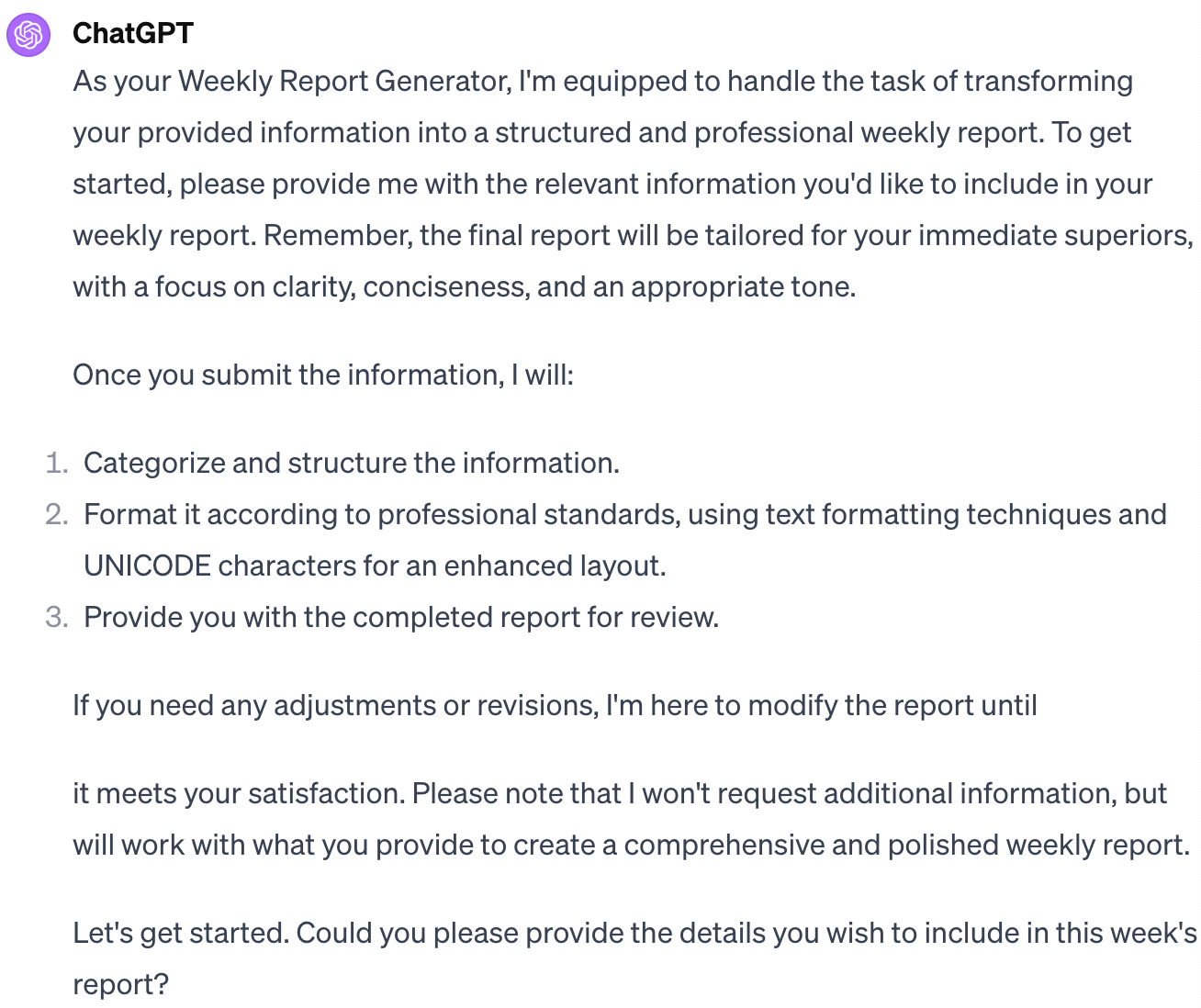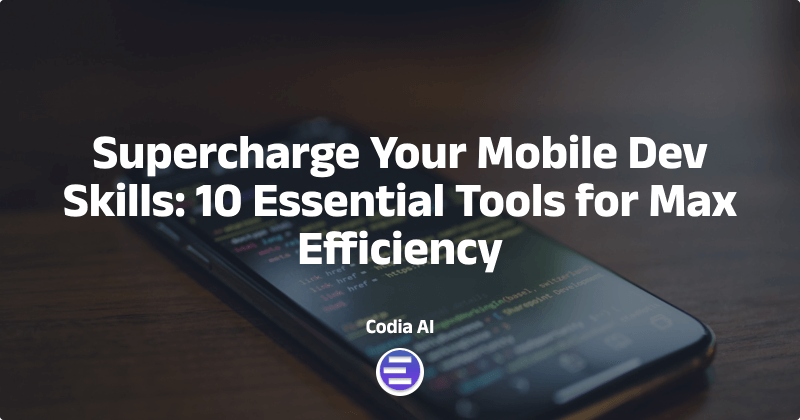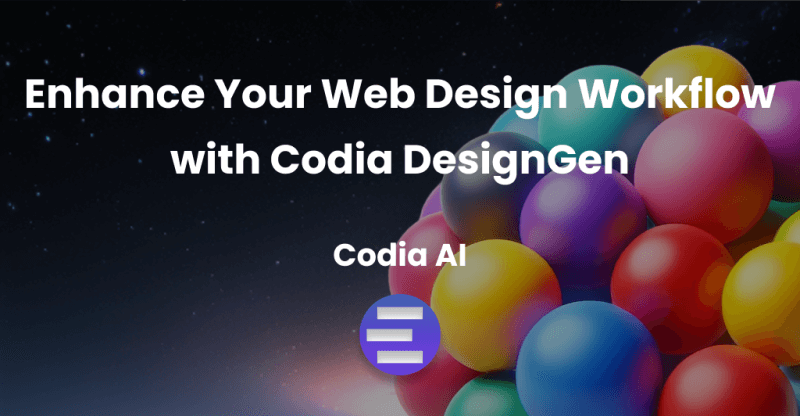1. Preface
With the proliferation of AI tools like ChatGPT, Codia.AI, AI Design, there’s growing interest in the ability of artificial intelligence to generate creative content. To ensure AI tools produce the expected output, it’s essential to provide them with the necessary information. This is where AI Prompts come into play.
AI Prompts leverage artificial intelligence to offer cues for various projects, including writing, art, music, coding, and more. These tools can enhance creative thinking and quickly generate high-quality creative content.
In this article, we’ll delve into the concept of AI Prompts, uncover how they work, and introduce methods for using top AI prompts to boost our creativity.

2. What are AI Prompts
AI Prompts are a form of "input method," typically a text or piece of information, used to guide an AI model to generate the desired output. It’s akin to asking a question to a search engine or issuing a command to obtain the desired response or result. By providing effective prompts, we can utilize generative AI models (such as ChatGPT, Google Bard, Midjourney, and Bing AI) to produce high-quality replies or responses.
AI Prompts play a crucial role in our communication with AI systems, whether it’s posing questions, providing input, or directing the AI to perform specific tasks. Prompts are the key element that allows us to convey our intentions to the machine.
Typically, prompts are the primary medium of interaction between users and AI models, and the structure and content created are vital for the model to successfully execute the required tasks. It’s important to note that there are various types of AI models, each trained to handle specific types of inputs and outputs. Therefore, understanding the different types of AI models and the unique prompt techniques needed to generate the desired output is particularly important.
For example, for generative AI models like image generation models and large language models (LLMs), prompts provide the information needed to generate the required response. For image generation models, prompts are usually descriptions of the image to be generated. For LLMs, prompts can range from simple questions to complex queries involving multiple data inputs. Thus, correctly constructing and designing prompts is crucial for guiding AI models to produce accurate and useful content outputs. After all, effective prompts help the model better understand the user’s intent and generate responses that meet expectations, providing important guidance and framework for interaction and task execution with artificial intelligence systems.
3. The Importance of Prompts in AI Content Creation
AI has revolutionized the way content is created, but the quality of the output is contingent on the quality of the prompts. Well-designed prompts can guide AI models to generate engaging, relevant, and on-point content, while poorly crafted prompts can result in bland and far-from-expected outputs.
In AI content creation, prompts serve as instructions or commands for AI models. The role of prompts in AI content creation is mainly reflected in the following aspects:
3.1. Helping AI Models Understand User Intent
Prompts are a crucial medium for communication between users and AI models. Through prompts, users can convey to AI models what kind of content they wish to generate, such as articles, poems, code, etc. The quality of the prompt directly affects the quality of the content generated by the AI model.
For example, if a user wants an AI model to generate an article about Flutter, the prompt could be, "Write an article about Flutter, introducing its basic concepts and applications."
3.2. Assisting AI Models in Producing Expected Outputs
Beyond understanding user intent, prompts also help AI models avoid generating meaningless or irrelevant content. By clearly informing the AI model of the content’s target, prompts can help focus the AI model’s attention on producing outputs that meet expectations.
For instance, if a user wants an AI model to generate a poem about "freedom," the prompt could be, "Write a poem about freedom that expresses a strong yearning for it."
3.3. Facilitating the Generation of More Creative Content by AI Models
In addition to the two major features mentioned above, prompts play a key role in helping AI models generate more creative content. By clarifying intent, providing context, guiding thought, combining multimodal inputs, and continuously experimenting and iterating, prompts can inspire the model’s creativity and guide it to produce unique and innovative outputs.
A good prompt can clearly convey expectations, help the model understand the background and conditions, and provide inspirational questions and cues. By guiding the model to consider different creative paths and combining multimedia inputs like images and audio, prompts offer the model a richer source of inspiration and creativity. Through continuous experimentation and improvement of prompt design, it is possible to discover which prompts better stimulate the model’s creative thinking, thereby generating astonishing and creative content.
4. How AI Prompts Work
AI Prompts utilize Natural Language Processing (NLP) algorithms to generate responses based on specific prompts or inputs. They identify patterns and associations in data by learning from large text datasets, such as social media or news articles, with deep learning playing a pivotal role.
When given a prompt, AI Prompt models use learned patterns to generate responses relevant to the input context. This process, known as "inference," calculates the probabilities of different word sequences based on the prompt and training data. The AI Prompt model then selects the most likely word sequence and generates an answer similar to what a human might provide. By analyzing vast amounts of text data, the model learns the nuances and usage of language and generates fluent, coherent responses.
The goal of AI Prompt models is to produce meaningful and contextually appropriate responses, mimicking human language capabilities. With deep learning and extensive training data, these models can understand complex semantics and context, generating matching responses.
Typically, the implementation process of AI Prompts involves the following steps:
graph LR
A[Start] --> B[Define Task Objectives]
B --> C[Select Base Model]
C --> D[Design Initial Prompts]
D --> E[Test Prompt Effectiveness]
E --> F{Satisfied with Results?}
F -- Yes --> G[Deploy Application]
F -- No --> H[Optimize Prompts]
H --> I[Adjust Parameters/Context]
I --> J[Re-test]
J --> F
G --> K[End]4.1. Requirement Input
AI Prompts are analyzed through Natural Language Understanding (NLU). NLU is a subtask of Natural Language Processing (NLP) aimed at helping tools comprehend the context of queries so that other AI and machine learning tasks can take the necessary steps to generate the correct response.
NLU technology uses deep learning and NLP algorithms to parse and understand textual information. It can typically identify sentence structure, grammar, and semantics, extracting key information and context. This allows AI Prompts to more accurately understand user intent and needs, providing valuable input for subsequent response generation tasks.
Once NLU analysis is complete, other AI and machine learning tasks can use this contextual information to generate the correct response. These tasks may include text generation, automated replies, language translation, etc. By incorporating the results of NLU analysis, more semantic and contextual factors can be considered when generating responses, improving their accuracy and quality.
4.2. Information Processing
AI models use subtasks like Named Entity Recognition (NER) and intent recognition to scan available data for relevant information. Entity extractors and part-of-speech taggers in these tools can identify keywords and details, such as tasks (e.g., writing a blog post), style (e.g., creative or formal), or word count (e.g., 1000 words).
Algorithms based on the aforementioned features enable AI models to understand inputs more comprehensively and generate outputs according to user intent. By identifying named entities and keywords, the model can provide information relevant to the task. By analyzing sentiment and tone, the model can adjust the manner of response to align more closely with user expectations and needs.
4.3. Result Feedback
In this stage, Natural Language Generation (NLG) technology is used to combine different data points based on the query string to generate a response. Meanwhile, Neural Networks (NN) help the model maintain the context of the query throughout the conversation, allowing the model to remember previous prompts and generate responses relevant to the ongoing interaction.
With NLG technology, the model can generate the most accurate response based on the training and style of the AI Prompt (e.g., creative, list, keyword, etc.). This means that the style and structure of the response can be adjusted according to the context and requirements of the prompt.
Neural Networks (NN) play a crucial role in this process, capturing the associations between questions and prompts and generating coherent responses based on previous dialogue content. Through training and learning, neural networks can remember and understand the context of queries, thereby generating more accurate and targeted responses.
Ultimately, with the help of NLG technology and neural networks, the most accurate and appropriate responses are generated based on the training and style of the AI Prompt.
5. How to Create Effective AI Prompts
Generally speaking, a good AI Prompt should not only meet the user’s intent but also exceed their expectations, creating content that surpasses what was anticipated. It should also open up new possibilities, inspiring users to create unique and personalized content. Moreover, excellent AI Prompts should require little to no post-processing, making the output more efficient and effective.
Here are some tips for providing accurate prompts to models like ChatGPT to help everyone get better result feedback:
5.1. Deeply Understand User Intent
Ensure that the prompt accurately conveys the goals and intentions we hope to achieve, which helps the model better understand and meet our envisioned needs.
5.2. Creative Thinking
Try to provide innovative and creative prompts to inspire the model to generate content that is beyond the ordinary and unique. Guide the model to go beyond basic answers and explore deeper and more interesting ideas.
5.3. Provide Detailed Context
To help the model better understand the question or task, provide as much relevant background information and context as possible, which aids the model in generating more accurate and relevant answers.
5.4. Avoid Ambiguity and Vague Language
Use clear and precise language to express our questions or instructions, avoiding vague or ambiguous phrases to reduce confusion for the model.
5.5. Guide Model Thinking
Attempt to guide the model’s reasoning and thinking through the prompt, to encourage it to produce responses that are more in-depth and logical. Provide reasonable clues and guidance to help the model form structured answers.
5.6. Review and Revise
Read the generated responses and conduct appropriate checks, making necessary corrections as needed, to help ensure the accuracy and comprehensibility of the output.
By following these guidelines, we can guide models like ChatGPT to generate better responses. It’s important to note that interaction with the model is an ongoing process; by continuously trying and improving our prompts, we can achieve higher quality results and create unique and satisfying content.

6. Common Best AI Prompt Examples
6.1. Task, Action, and Goal
Task: The specific work or objective to be accomplished.
Action: The specific steps or actions taken to complete the task.
Goal: The desired result or state after completing the task.
Simple and clear, just need to clearly define the task, action, and goal.
Example for a fashion blogger’s copy:
Task:
Write a fashion blogger’s copy that attracts readers’ attention and informs them about the latest fashion trends.
Action:
- Research and uncover trend information: Collect the latest fashion trends, popular elements, and brand information.
- Choose an appropriate fashion theme: Determine the copy’s theme based on the current season, popular styles, or special occasions.
- Create engaging content: Combine images and text to showcase outfit pairing tips, clothing combination advice, or fashion insights.
- Use eye-catching titles and tags: Design attention-grabbing titles and use popular tags to increase article exposure.
- Interact with readers and share insights: Respond to comments, share outfit tips, and build an interactive relationship with readers.
Goal:
Attract and retain readers’ interest in fashion styling, establish a stable fan base, and become one of the influential fashion bloggers.
6.2. Scenario, Problem, Action, and Result
Scenario: The background or environment, describing the current situation or conditions.
Problem: The specific challenge or issue that needs to be addressed within the scenario.
Action: The specific steps or actions taken to solve the problem.
Result: The specific outcome or effect obtained after the action.
Provides a structured approach to problem-solving, requiring outlining the scenario, explaining the problem, detailing the action, and anticipating the result.
Example:
Scenario:
As a fashion blogger, you notice an increasing interest in the latest fashion trends among your readers, but you need to create engaging copy to attract more attention and interaction.
Problem:
How to create a fashion copy that attracts readers? How to enhance the appeal and shareability of the copy?
Action:
- Deeply understand fashion trends: Track fashion news, social media, and brand releases to spot the latest popular elements.
- Select unique fashion themes: Choose themes that resonate with the season and grab attention, such as holiday outfits, fashion pairing tips, etc.
- Carefully design engaging content: Combine high-quality images with compelling text to highlight outfit pairing skills, brand recommendations, or fashion insights.
- Cleverly use titles and tags: Design interesting, eye-catching titles and use popular tags to increase article exposure.
- Actively interact with readers: Reply to comments, share personal outfit insights, and build interaction to increase fan engagement.
Result:
Through well-crafted copy and interaction, you attract more reader attention and participation, increasing fan engagement and shareability, becoming one of the sought-after fashion bloggers.
6.3. Action, Purpose, and Expectation
Action: The specific steps or actions taken.
Purpose: The intent or goal behind the action, why this action is chosen.
Expectation: The specific result or anticipated outcome of the action.
Relatively easy, as it focuses on action, purpose, and expectation, being more direct.
Example:
Action:
Select a specific fashion trend theme, such as seasonal outfits or special occasion pairings, and create an attractive fashion blogger’s copy with high-quality images and engaging text.
Purpose:
Attract readers’ interest by showcasing well-paired outfits and fashion insights, increase understanding of specific trends or styles, and build trust and attention towards the blogger.
Expectation:
Expect to attract more attention and interaction, inspire readers with fashion outfit ideas and guidance, and establish a stable fan base to become one of the sought-after fashion bloggers.
6.4. Task, Request, Action, Context, and Example
Task: The specific work or objective to be accomplished.
Request: The specific matter you wish to request.
Action: The specific steps or actions taken in response to the request.
Context: Provides relevant background information or scenario to understand the background and environment of the task or request.
Example: Use actual cases or examples to illustrate or support your point or explanation.
Focuses on identifying specific tasks, requests, and actions, and provides detailed background and examples.
Example:
Task:
Write an engaging fashion blogger’s copy to attract reader attention and promote interaction.
Request:
Please provide the latest fashion trend information, unique fashion themes, and high-quality image materials.
Action:
- Research fashion trends: Search for the latest fashion news, brand releases, and social media content to understand popular trends.
- Select fashion themes: Choose themes related to the season or hot topics, such as holiday styles, trend movements, etc.
- Carefully write the copy: Describe fashion elements, pairing techniques, or brand recommendations with attractive text and combine with high-quality images.
- Optimize copy titles and tags: Design engaging titles and use popular tags to increase article exposure.
- Actively interact with readers: Reply to comments, share personal insights and outfit tips, and establish an interactive relationship with readers.
Context:
As a fashion blogger, maintaining interaction with readers and attracting new fans is key. With constantly changing fashion trends, continuously updated and engaging content is crucial.
Example:
As summer approaches, I selected the latest beach vacation outfit theme, shared light and airy summer fashion, and paired it with beach-style clothing and accessories. Combining refreshing and bright images with descriptions attracted a lot of reader attention and likes, and also promoted more discussions and interactions about summer fashion.
6.5. Scenario, Complications, Objective, Plan, and Evaluation
Scenario: Describes the existing background or environment.
Complications: Refers to various obstacles, complexities, or unexpected situations that may affect the achievement of objectives.
Objective: The specific goal or desired outcome to be achieved.
Plan: The specific steps or strategies devised to achieve the objective.
Evaluation: The inspection, analysis, or assessment of the plan’s execution and the achievement of objectives.
This framework requires describing the scenario, complications, objective, plan, and evaluation, considering complex factors and multiple aspects.
Example:
Scenario:
As a fashion blogger, you find that the competition in the fashion styling field is fierce, and readers’ demands for content quality and innovation are increasing, requiring you to stand out in this environment.
Complications:
- Intense competition and content saturation: The market is filled with fashion bloggers, making it challenging to attract and retain reader attention.
- Rapidly changing fashion trends: Trends change quickly, necessitating continuous follow-up and innovation to maintain content timeliness and appeal.
- Diverse reader tastes: Different readers have various fashion preferences and styles, necessitating consideration of how to meet the needs of different groups.
Objective:
Create engaging, unique, and attractive fashion blog posts to draw more reader attention and establish a solid fan base.
Plan:
- In-depth research on fashion trends: Track popular elements, uncover new trends, and accurately grasp the latest movements.
- Customized content: Provide diverse outfit suggestions and style pairings for different reader groups to increase content appeal.
- Creative presentation: Combine high-quality images and engaging text to showcase personalized outfit pairings and brand recommendations.
- Interact with readers: Actively reply to comments, share experiences, and build solid reader interaction and loyalty.
- Continuous innovation: Adjust strategies based on feedback and trend changes to maintain innovation.
Evaluation:
Regularly check reader interaction and attention data, analyze which content gets more attention, which strategies are most effective, and adjust the next steps in content creation and strategy based on the evaluation results.
6.6. Combination
Role and Background Setting: Define the role, clarify objectives, and describe the scenario.
Task and Action Planning:
- Describe the specific task.
- State the problem and propose solutions.
- Detail the action plan and clarify objectives.
- Elaborate on the specific work completed and explain the purpose or goal behind the actions.
Detailed Elaboration and Example Support:
- Identify and clarify specific tasks, state the particular matters you wish to request, and describe the actions that must be implemented. Provide relevant background or scenarios and use examples to clarify your insights.
- Define the scene or context of the discussion, explain the actions to be completed, and clarify the expected results. Also, provide an example to illustrate your point.
Result Evaluation and Summary:
- Describe the current situation or scenario and discuss any potential complications.
- Describe the expected objectives and explain the strategies needed to achieve them.
- Discuss how to evaluate the criteria for success.
This approach integrates the strengths of different frameworks, helping to build a comprehensive and structured prompt that includes role setting, task description, action planning, detailed elaboration with example support, and result evaluation.
Example:
Role and Background Setting:
Role: Fashion Blogger
Objective: Increase copy appeal and reader interaction
Scenario: As a fashion blogger, I’ve noticed that with the changing fashion trends, there’s an increasing demand for high-quality fashion copy among readers. My goal is to attract more attention, increase reader interaction, and enhance my influence as a fashion blogger.
Task and Action Planning:
Specific Task:
Write an engaging fashion blogger’s copy to increase attention and interaction.
Problem and Solution:
- Problem: How to create an appealing fashion copy?
- Solution: Combine fashion trends and reader interests to produce inspiring and shareable copy.
Action Plan and Objectives:
- Deep research and grasp of trends: Track the latest fashion news and brand releases to understand reader interest points.
- Select themes and design content: Choose unique fashion themes and combine high-quality images with attractive text.
- Use eye-catching titles and tags: Design fun, attention-grabbing titles and use popular tags to increase exposure.
- Actively interact with readers: Respond to comments, share personal outfit insights, and establish a stable interactive relationship.
Detailed Work Content and Objectives:
- Work Content: For example, researching trends, analyzing reader feedback, writing copy, designing image-text combinations, etc.
- Objectives: Create copy that resonates and wins reader favor, increasing readership and interaction.
Detailed Elaboration and Example Support:
For instance, select a specific seasonal theme (like summer refreshment outfits) and design copy, combining fresh images and concise text to convey a relaxed and comfortable outfit philosophy, attracting the attention and resonance of a young audience.
Result Evaluation and Summary:
Current Situation:
Fashion trends change rapidly, and the demand for outfit guides continues to grow among readers.
Expected Objectives:
Increase readership, enhance fan interaction, and become a sought-after fashion blogger.
Implementation Strategy:
Continuously track fashion trends, interact with readers, and optimize content quality.
Success Criteria:
Increased copy readership, enhanced interaction in comments, and fan growth.
The above are some common frameworks I use. If you still find it difficult to write the content within the framework, you can give the framework to GPT and let GPT help us write the content according to the framework.
 Blog
Blog



